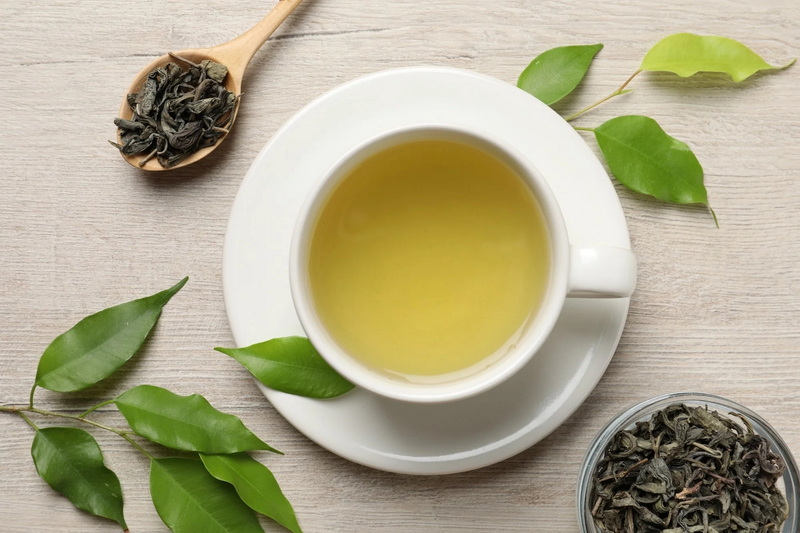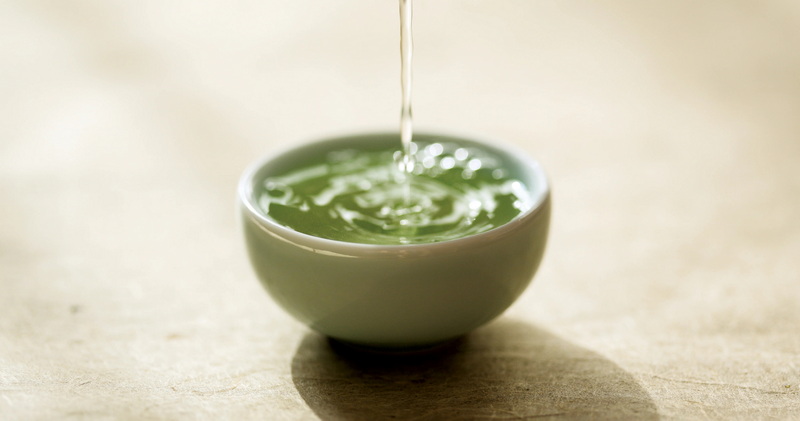Content Menu
● Understanding Fluoride in Green Tea
● Factors Influencing Fluoride Content
>> 1. Type of Tea
>> 2. Age of Leaves
>> 3. Geographical Origin
>> 4. Brewing Conditions
● Fluoride Levels in Green Tea Extract
● Health Implications
>> Recommended Daily Intake
● Benefits of Green Tea Beyond Fluoride
● Consumer Considerations
● Conclusion
● FAQs
>> 1. Is it safe to drink green tea daily?
>> 2. How much fluoride is too much?
>> 3. Does organic green tea contain less fluoride?
>> 4. Can I reduce fluoride levels in my brewed tea?
>> 5. What are the symptoms of fluorosis?
● Citations:
Green tea has gained immense popularity over the years due to its numerous health benefits, including antioxidant properties, potential weight loss effects, and improved brain function. However, one aspect that often raises concerns among consumers is the fluoride content present in green tea extract. This article delves into the fluoride levels found in green tea, factors affecting these levels, and the implications for health.

Understanding Fluoride in Green Tea
Fluoride is a naturally occurring mineral that is beneficial for dental health; however, excessive fluoride intake can lead to adverse health effects such as dental and skeletal fluorosis. The presence of fluoride in green tea primarily stems from the Camellia sinensis plant's ability to absorb fluoride from the soil and environment. The fluoride concentration can vary significantly based on several factors, including the type of tea, the age of the leaves, and brewing conditions.
Factors Influencing Fluoride Content
1. Type of Tea
Different types of tea contain varying levels of fluoride. Research indicates that:
- Black Tea: Generally has higher fluoride levels due to the use of older leaves.
- Green Tea: Contains moderate levels of fluoride, often less than black tea but more than white tea.
- White Tea: Typically has the lowest fluoride content since it is made from young buds and leaves.
The differences in fluoride content among these types can be attributed to their processing methods and the parts of the plant used. For example, black tea is fully oxidized, which may lead to higher fluoride retention compared to less processed green or white teas.
2. Age of Leaves
Older leaves tend to accumulate more fluoride than younger ones. Studies show that mature leaves can contain up to 20 times more fluoride compared to younger buds. This accumulation occurs because older leaves have had more exposure to environmental factors that contribute to fluoride uptake.
3. Geographical Origin
The fluoride content in green tea also depends on its geographical origin. For instance:
- Chinese Green Teas: Are reported to have higher fluoride concentrations (average of 6.83 ppm) compared to Japanese teas (average of 1.88 ppm).
The differences can be attributed to soil composition and agricultural practices in different regions.
4. Brewing Conditions
Brewing time and temperature significantly affect the amount of fluoride extracted into the tea infusion. Longer brewing times (up to 20 minutes) can increase fluoride levels in the brewed tea.
For example:
- Brewing at higher temperatures (around 90°C) can result in a greater extraction of fluoride compared to lower temperatures (around 70°C).
Fluoride Levels in Green Tea Extract
Research studies have quantified the fluoride levels in various green teas:
- A study indicated that the average fluoride concentration in brewed green tea ranges from approximately 1.19 mg/L to 4.03 mg/L depending on factors like brewing time and leaf age.
- In flavored green teas, concentrations can vary widely; for example, bagged peach-flavored green tea showed a maximum concentration of 3.29 mg/L.
These findings highlight that consumers should be aware of both the type of green tea they choose and how they prepare it, as these factors can significantly influence their overall fluoride intake.

Health Implications
While fluoride is beneficial for dental health in small amounts, excessive consumption can lead to negative health outcomes such as fluorosis. For most individuals consuming moderate amounts of green tea, the fluoride intake remains within safe limits.
Recommended Daily Intake
The recommended daily intake of fluoride varies by age and health guidelines but generally falls around 0.05 mg/kg body weight. For an average adult weighing 70 kg, this equates to approximately 3.5 mg per day.
It's important for consumers who regularly drink green tea to consider their total dietary sources of fluoride, including toothpaste and other beverages.
Benefits of Green Tea Beyond Fluoride
While understanding the fluoride content is essential, it's also crucial to recognize the myriad benefits that green tea offers:
- Antioxidant Properties: Green tea is rich in polyphenols like catechins, which are known for their antioxidant effects that combat oxidative stress.
- Weight Management: Some studies suggest that green tea extract may aid in weight loss by enhancing metabolic rate and fat oxidation.
- Heart Health: Regular consumption has been linked with a reduced risk of cardiovascular diseases due to its ability to improve cholesterol levels and blood vessel function.
- Cognitive Function: Compounds found in green tea may have neuroprotective effects that support brain health and reduce the risk of neurodegenerative diseases.
Consumer Considerations
When choosing green tea products, consumers should consider several aspects:
- Source: Opt for reputable brands that provide information about their sourcing practices and testing for contaminants like fluoride.
- Type: If concerned about fluoride intake, consider selecting younger teas or those known for lower concentrations.
- Preparation: Experiment with brewing techniques—using cooler water or shorter steeping times can help minimize fluoride extraction while still enjoying the flavor and benefits of green tea.
Conclusion
In conclusion, while green tea does contain fluoride, its levels are generally considered safe for most consumers when consumed in moderation. The actual amount can vary based on several factors including type, origin, and brewing methods. Individuals concerned about their fluoride intake should consider these variables when incorporating green tea into their diet.

FAQs
1. Is it safe to drink green tea daily?
Yes, drinking moderate amounts of green tea (3-4 cups per day) is generally safe for most people and can provide health benefits.
2. How much fluoride is too much?
The tolerable upper intake level for adults is about 10 mg per day; however, chronic exposure above this level can lead to fluorosis.
3. Does organic green tea contain less fluoride?
Organic teas may contain similar amounts of fluoride as non-organic teas since the source of fluoride absorption is environmental rather than agricultural practices.
4. Can I reduce fluoride levels in my brewed tea?
Yes, using lower temperatures for brewing and shorter steeping times can help reduce the amount of fluoride extracted into your cup.
5. What are the symptoms of fluorosis?
Symptoms of dental fluorosis include white spots or streaks on teeth; skeletal fluorosis may cause joint pain or stiffness over time.
Citations:
[1] https://fluoridealert.org/studies/tea02/
[2] https://www.mdpi.com/2072-6643/14/12/2550
[3] https://jcda.ca/l3
[4] https://www.youtube.com/watch?v=JQZUM4Ee1MA
[5] https://www.nature.com/articles/s41598-021-93548-3
[6] https://www.rdhmag.com/patient-care/patient-education/article/14033922/hidden-fluoride-in-tea-and-other-foods-and-beverages
[7] https://www.drweil.com/health-wellness/body-mind-spirit/dental-oral-health/is-the-fluoride-in-green-tea-harmful/
[8] https://www.youtube.com/watch?v=FBJWM4aSd2Y
[9] https://pmc.ncbi.nlm.nih.gov/articles/PMC4811265/
[10] https://delishably.com/beverages/Fluoride-Content-in-Black-Tea-White-Tea-and-Green-Tea-Tea-Health-Benefits-and-Dangers
[11] https://www.edenfoods.com/faqs/view.php?categories_id=9
[12] https://pmc.ncbi.nlm.nih.gov/articles/PMC9672222/
[13] https://dergipark.org.tr/tr/download/article-file/172338
[14] https://www.drweil.com/health-wellness/body-mind-spirit/dental-oral-health/is-the-fluoride-in-green-tea-harmful/
[15] https://www.researchgate.net/figure/Total-fluoride-content-of-dry-flavored-green-tea-and-tea-liquor_tbl1_299470132
[16] https://pmc.ncbi.nlm.nih.gov/articles/PMC9672222/
[17] https://journaljpri.com/index.php/JPRI/article/view/2743
[18] https://www.nature.com/articles/s41598-021-93548-3
[19] https://www.fluorideresearch.online/epub/files/076.pdf
[20] https://pmc.ncbi.nlm.nih.gov/articles/PMC4808922/
[21] https://jcda.ca/l3






























